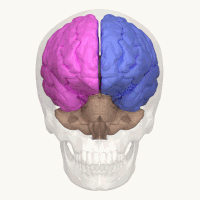
Photo from wikipedia
Introduction Our previous studies have proposed the bodyweight support–t’ai chi (BWS-TC) footwork training for stroke survivors with severe motor dysfunction and fear of falling, and have proven its positive effects… Click to show full abstract
Introduction Our previous studies have proposed the bodyweight support–t’ai chi (BWS-TC) footwork training for stroke survivors with severe motor dysfunction and fear of falling, and have proven its positive effects for motor function. Transcranial direct current stimulation (tDCS) provides a non-invasive and safe way to modulate neuronal activity and provoke neuroplastic changes and to improve the motor function of stroke survivors. However, it is unclear whether the integration of BWS-TC and tDCS has synergistic effects on improving motor function of the stroke survivors. Methods and analysis This study will be an assessor-blinded randomised controlled trial involving 12-week intervention and 6-month follow-up. One hundred and thirty-five individuals with stroke will be randomly divided in a ratio of 1:1:1 into three groups. Control group A, control group B and intervention group C will receive tDCS and conventional rehabilitation programmes (CRPs), BWS-TC and CRP, tDCS-BWS-TC and CRP for 12 weeks, respectively. The primary outcome measures will include the efficacy (Fugl-Meyer Assessment), acceptability and safety of these interventions. The secondary outcome measures will include balance ability (ie, limits of stability and modified clinical test of sensory integration), walking function, brain structure and function, risk of falling, Barthel Index and 36-Item Short Form Survey. All outcomes will be assessed at baseline, 6 and 12 weeks during intervention, and 1, 3 and 6 months during the follow-up period. Two-way analysis of variance with repeated measures will be applied to examine the main effects of the group and the time factor and group–time interaction effects for all outcome measures. Ethics and dissemination Ethics approval was obtained from the ethics committee of the Shanghai Seventh People’s Hospital (2021-7th-HIRB-017). The results of the study will be published in a peer-reviewed journal and presented at scientific conferences. Trial registration number ChiCTR2200059329.
Journal Title: BMJ Open
Year Published: 2023
Link to full text (if available)
Share on Social Media: Sign Up to like & get
recommendations!